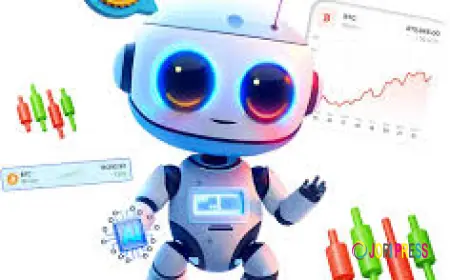AI at the Edge: How On-Device Intelligence Is Reshaping Consumer Electronics in 2025
So, what’s the buzz all about? Let me walk you through how AI at the Edge is influencing the consumer tech space and what it means for the average user like you and me.

The rapid evolution of technology is often a blur of exciting innovations that promise to change the way we interact with the world. However, when I stop to think about the most groundbreaking trends in consumer electronics, one concept that stands out is AI at the Edge. In 2025, AI isn’t just about running powerful algorithms in the cloud anymore; it’s increasingly moving to our devices, offering smarter, faster, and more personalized experiences than ever before.
This shift is a game-changer across various industries, but its impact on consumer electronics—particularly the devices we use in our daily lives—deserves a closer look. From smarter smartphones to more responsive smartwatches, on-device intelligence is reshaping how we interact with everything around us.
The Problem: Why Cloud-Based AI Wasn't Enough
Up until now, the majority of AI processing was handled in the cloud. It made sense: The cloud offered vast amounts of computing power that allowed companies to run large-scale machine learning models without the constraints of local processing. But there were a few major drawbacks:
Latency Issues
For one, cloud-based AI requires constant internet connectivity. Even a slight delay in the connection can cause lag, impacting the user experience. When you’re talking about devices like smart home assistants or autonomous vehicles, even milliseconds of delay can make all the difference. The delay in data processing as it travels back and forth between your device and a distant data center can be frustrating.
Privacy Concerns
Another issue with cloud-based AI is privacy. Not everyone is comfortable with the idea of sending their personal data, habits, and preferences to external servers. It’s a legitimate concern, especially when you consider how much of our lives are now captured through the devices we use. As much as we enjoy personalized experiences, we also want to know that our information isn’t being shared without our consent.
High Power Consumption
Let’s not forget the energy consumption factor. Constantly sending data to the cloud and receiving feedback requires significant power, not just from your device but from the infrastructure supporting those cloud systems.
That’s where AI at the Edge comes in.
The Solution: On-Device Intelligence
On-device intelligence means that AI processing takes place locally on the device itself, rather than relying on a remote server. This shift not only solves some of the issues with cloud-based AI, but it also opens up new possibilities. Let me break it down:
Real-Time Processing
With on-device AI, data can be processed instantly. There’s no need for data to travel across the internet, which means much faster response times. Whether it's facial recognition on your phone, adaptive battery usage, or even real-time translation, everything happens instantly on your device, making the experience more seamless and fluid.
Enhanced Privacy
When AI operates directly on your device, your data stays with you. This is a huge win for privacy-conscious consumers. Sensitive information like your health data, voice commands, and preferences don’t need to be uploaded to the cloud, where it could potentially be exposed. Instead, your device processes everything locally, which not only protects your privacy but also offers peace of mind.
Better Energy Efficiency
On-device AI is more energy-efficient because it doesn’t require constant communication with the cloud. Devices can use specialized chips that are designed to handle AI tasks without draining the battery, allowing for longer usage times without sacrificing performance. In 2025, AI chips are more efficient than ever before, and we can expect even more power-efficient devices in the future.
How AI at the Edge is Changing Consumer Electronics
Now that we understand the potential of AI at the Edge, let’s explore how it’s actually reshaping the consumer electronics landscape in 2025.
Smarter Smartphones
We’ve come a long way from the early days of smartphones, where the primary function was calling and texting. Today, smartphones are central to our daily lives, and with AI at the Edge, they’ve become even more intelligent.
-
Face Recognition: Instead of sending your facial data to the cloud for recognition, your phone can process it locally, increasing speed and security.
-
Battery Optimization: AI can now predict your usage patterns and optimize battery consumption based on your habits, extending battery life without you having to worry about it.
-
Photography: AI can automatically adjust camera settings based on the scene you’re capturing, enhancing photos in real time, whether it's low-light optimization or subject tracking.
On top of that, the best vape flavors can now be captured through personalized recommendations on your device, so you never have to spend hours deciding what flavor suits your mood.
Wearables: More Personal, More Adaptive
Wearable devices like smartwatches and fitness trackers are also benefitting from on-device AI. These gadgets are becoming far more intuitive than ever before.
-
Health Monitoring: AI can analyze your heart rate, activity levels, and even stress indicators, offering insights and recommendations based on your real-time data.
-
Personalized Fitness Plans: Rather than syncing to a cloud-based service, wearables can use on-device intelligence to tailor workouts to your specific needs and progress, adjusting in real time.
In addition, if you’re someone who enjoys vaping on the go, the convenience of using a vape pod alongside your wearable tech offers an even more seamless lifestyle experience. These devices now sync with each other to track your habits, whether for health reasons or just for fun.
Smart Home Devices: Truly Intelligent
AI at the Edge is also revolutionizing smart home technology. Imagine walking into your home, and your thermostat adjusts the temperature based on your preferences, your lights turn on, and your smart assistant greets you—all without needing a connection to the cloud.
-
Voice Assistants: With local AI, voice assistants can now process commands more efficiently, understanding context and intent better than before.
-
Energy Management: AI can monitor energy usage across devices and optimize them in real-time for efficiency, helping you save on electricity bills without compromising on comfort.
Autonomous Vehicles: Smarter and Safer
In the world of self-driving cars, AI at the Edge plays a critical role in improving both safety and performance. These vehicles need to process vast amounts of data from sensors, cameras, and radars in real time to make split-second decisions.
-
Real-Time Navigation: AI can make adjustments to your route based on current traffic conditions, road hazards, or even nearby accidents, all while operating locally within the vehicle’s system.
-
Improved Safety Features: By analyzing surrounding data in real time, AI helps cars predict and avoid potential collisions, improving overall safety.
Edge AI in Gaming and Virtual Reality
For gaming enthusiasts, the future looks even more exciting. Edge AI is allowing game consoles and VR headsets to offer more responsive, immersive experiences.
-
Instant Rendering: AI can help reduce lag and improve the graphics quality by instantly adjusting game settings based on your preferences.
-
Adaptive Gameplay: Games can use AI to adjust difficulty levels dynamically based on your skill level, providing a more personalized experience every time you play.
The Future: What’s Next for AI at the Edge?
Looking ahead to the next few years, it’s clear that AI at the Edge is only going to grow stronger, more sophisticated, and more integrated into the consumer electronics we rely on. In 2025, we’ll see even more devices running local AI algorithms, allowing for faster, smarter, and more personalized experiences across the board.
From the smartphones we use to the cars we drive, AI at the Edge will continue to empower consumers with greater control over their devices, more intuitive experiences, and improved privacy. As more and more companies integrate local AI into their products, we’ll see a rapid shift in the way we interact with technology—no more waiting for cloud servers, no more privacy worries, and no more lag. The future is all about smarter devices that work for us, in real-time and right at our fingertips.
So, as we embrace 2025, it’s exciting to think about what’s next. I, for one, can’t wait to see where AI at the Edge will take us. What about you? How do you think this will shape your experience with your favorite devices? Let me know in the comments!
What's Your Reaction?
 Like
0
Like
0
 Dislike
0
Dislike
0
 Love
0
Love
0
 Funny
0
Funny
0
 Angry
0
Angry
0
 Sad
0
Sad
0
 Wow
0
Wow
0



















































